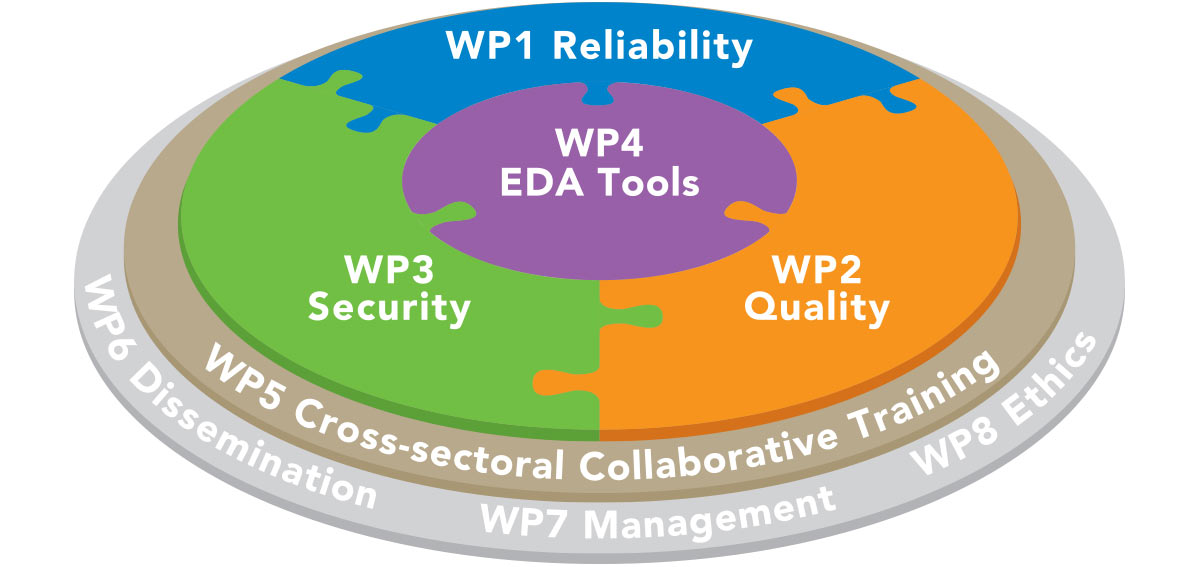Research
RESCUE ETN sets the following four research directions:
Reliability of nanoelectronic systems that is subject to threats during the system’s lifetime in the field such as wear-out or ageing defects and errors coming from the environment, e.g. radiation caused soft errors.
Research objectives (WP1): Contribute to novel accurate modelling of failure mechanisms and develop new mitigation schemes to enable lifetime extension against e.g. Negative/Positive Bias Temperature Instability (NBTI/PBTI) and Hot Carrier Injection (HCI) phenomena, and fault resilience mechanisms against e.g. soft errors under consideration of quality and security constraints in the new nanotechnology nodes, also beyond 28nm.
Quality of nanoelectronic systems that can be compromised by threats at time zero of the system’s life. These include design errors, manufacturing defects, nanometer technology process variation, etc. and are addressed by means of pre- and post-silicon functional validation, test and diagnosis.
Research objectives (WP2): Develop novel fault models for the current and approaching implementation technologies (e.g. FinFET) and new design architectures (e.g. multi- and many-core systems). Establish novel error management schemes at the system level, which will allow setting seamless trade-offs between the targets of reliability, security and performance. Propose new efficient methodology for scalable design error debug, including diagnosis, localization, and correction.
Security of nanoelectronic systems that can be compromised by attacks on design IP (intellectual property), data asset and design functionality. The key actions here are secure design of hardware and embedded software parts and accurate security evaluation.
Research objectives (WP3): Develop and evaluate novel reliability- and quality-aware resilient schemes against fault and side-channel attacks. Development of “root of trust” in hardware relying on Physically Unclonable Functions (PUFs). Contribute to methods for reliability, design and test of secure systems.
EDA tools and methodologies for secure, correct and reliable nanoelectronics attained a holistic approach.
Research objectives (WP4): Collaboratively create an innovative RESCUE holistic EDA framework for the interdependent aspects i.e. reliability, security and quality in nanoelectronic systems design. Promote and implement open-source tools. Shrink the research commercialization gap. Support research training by the best commercial EDA tools.












